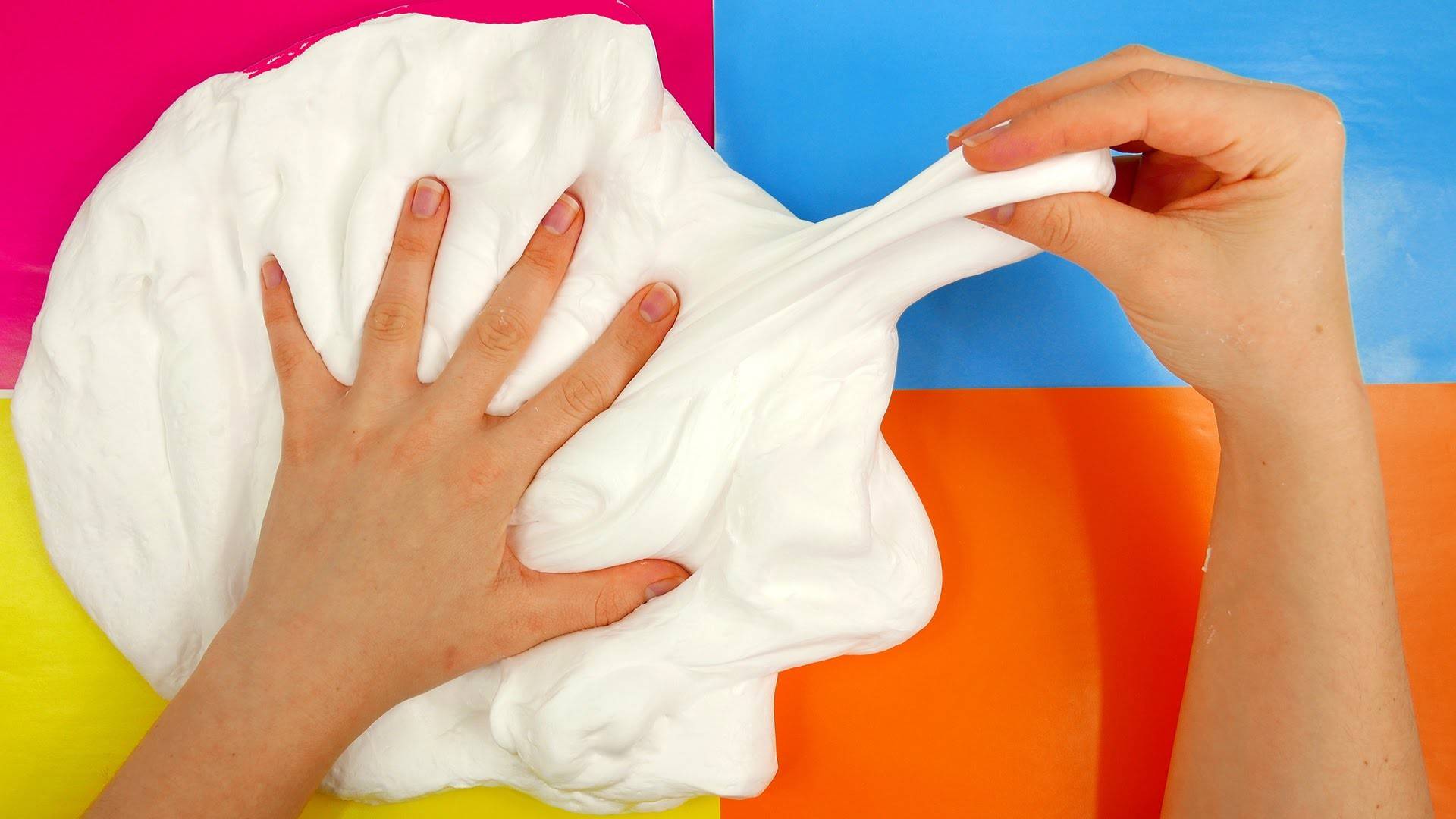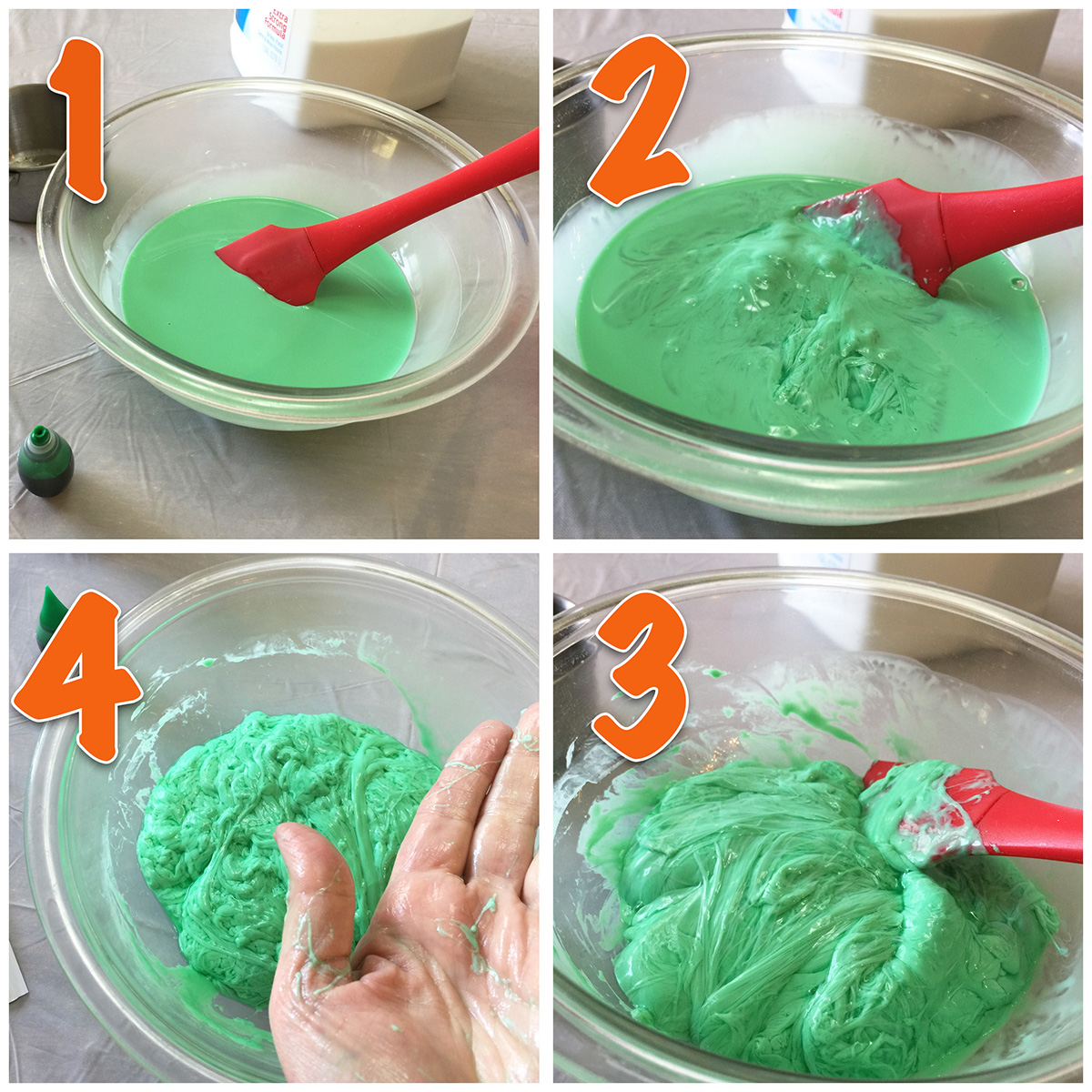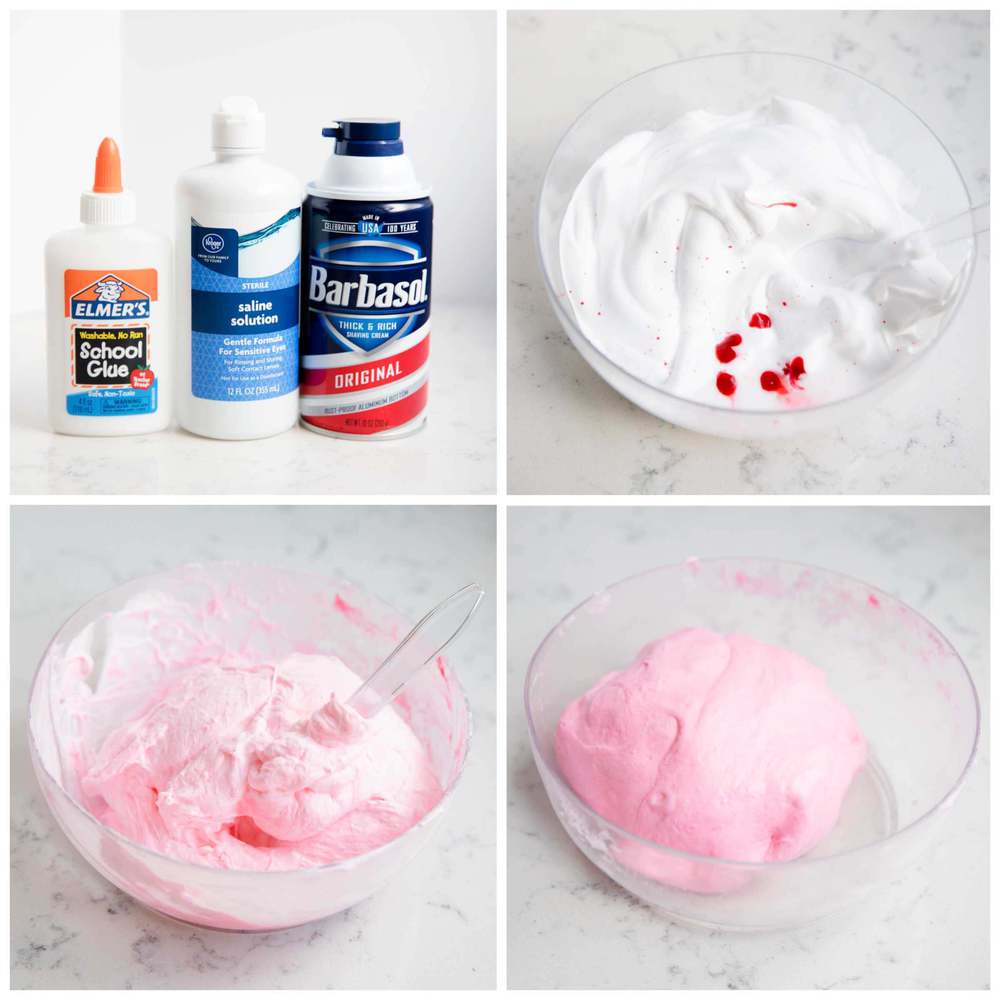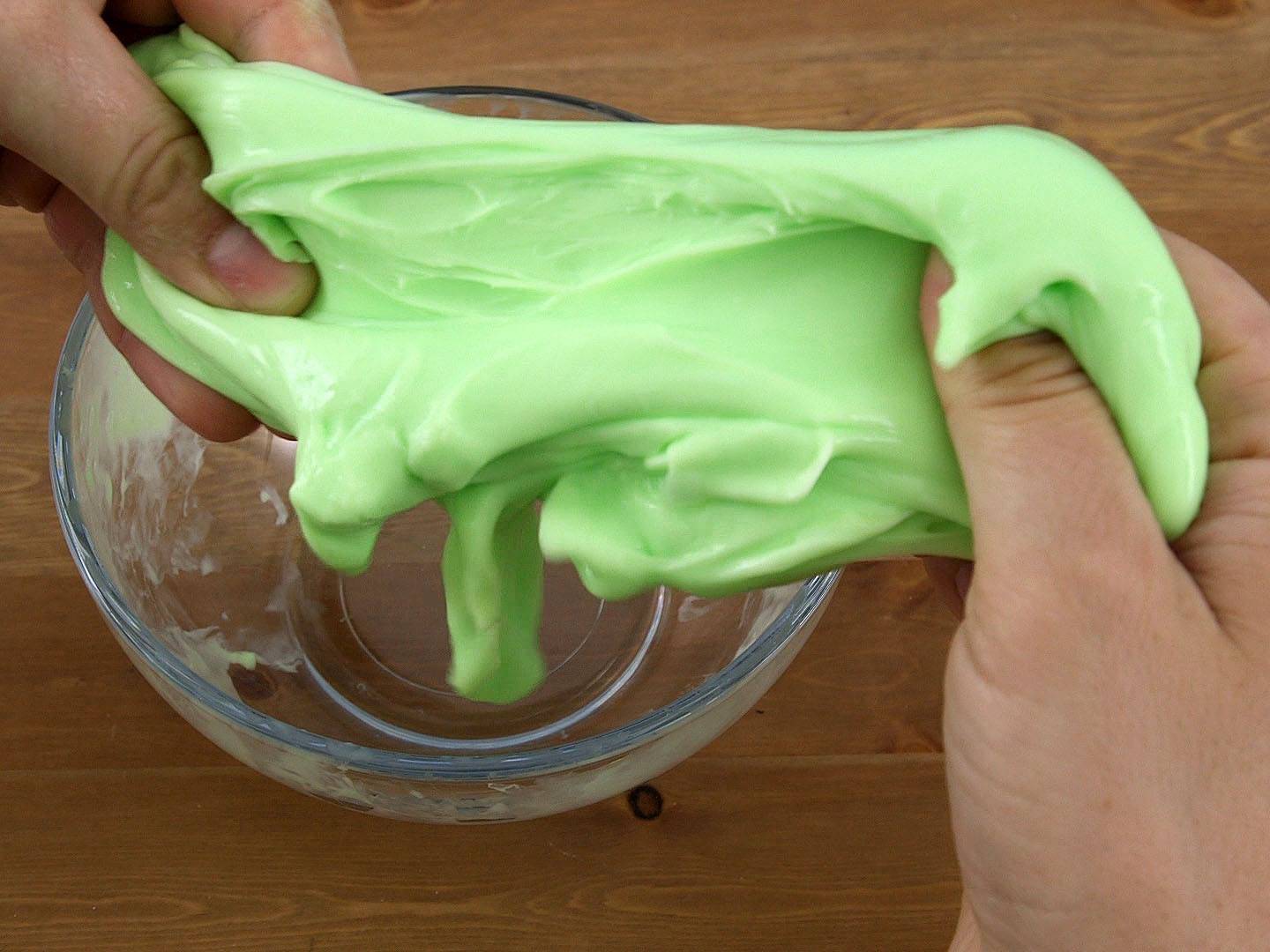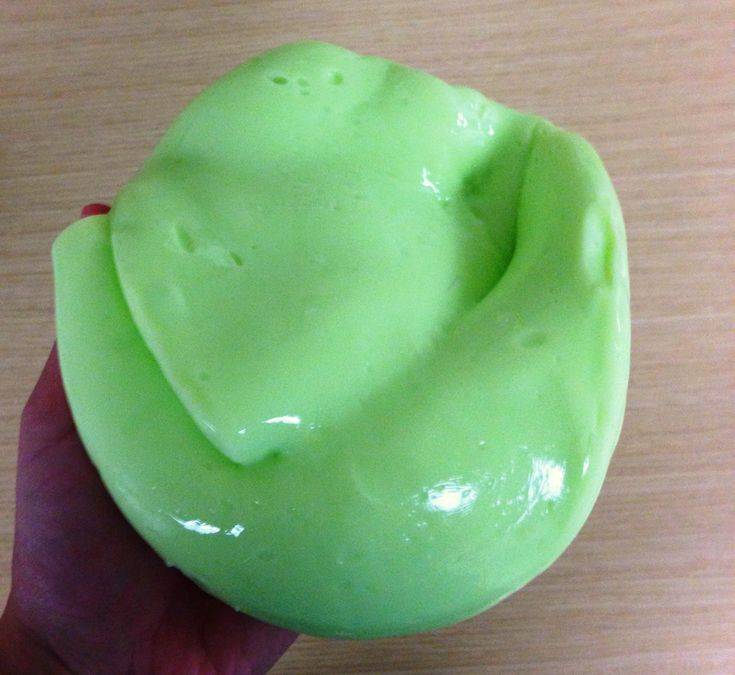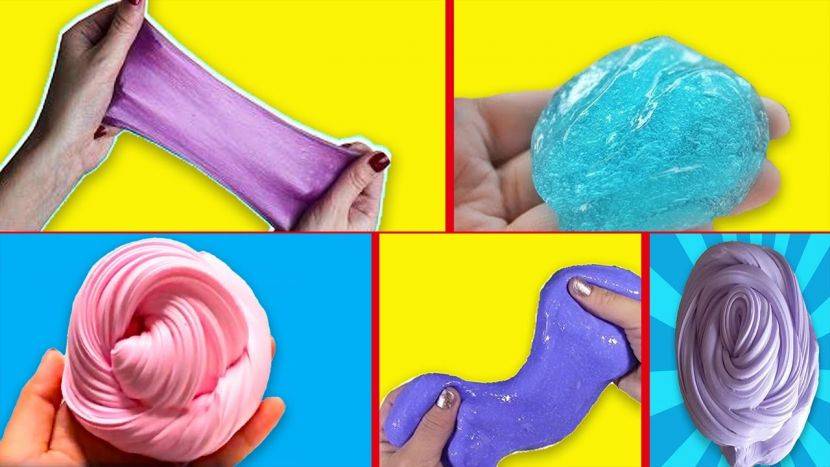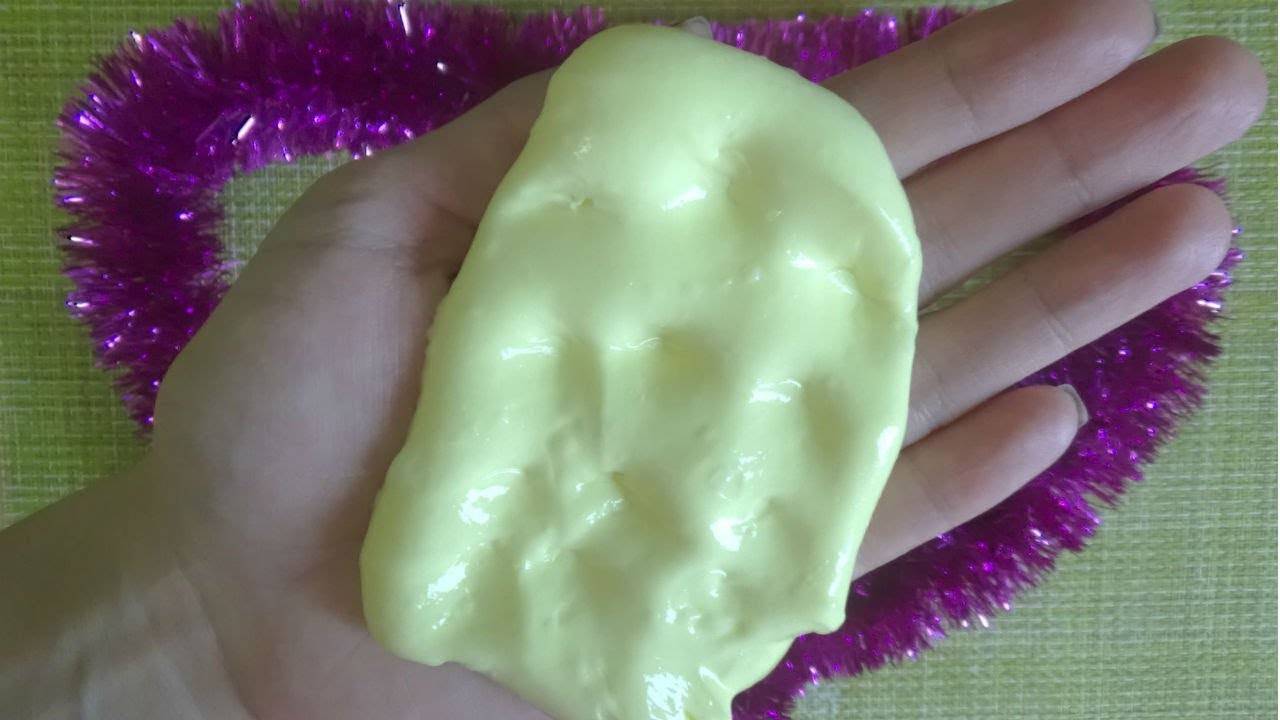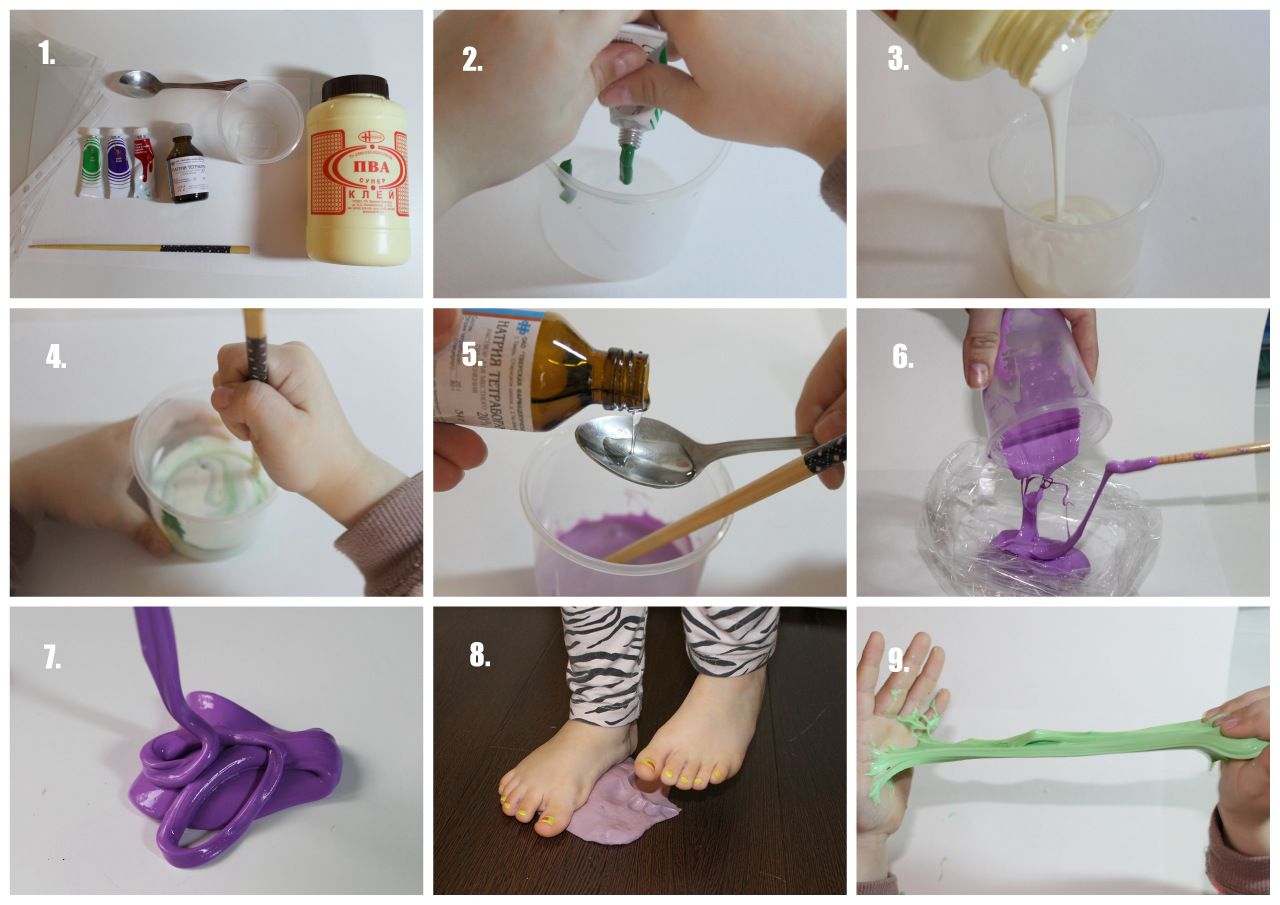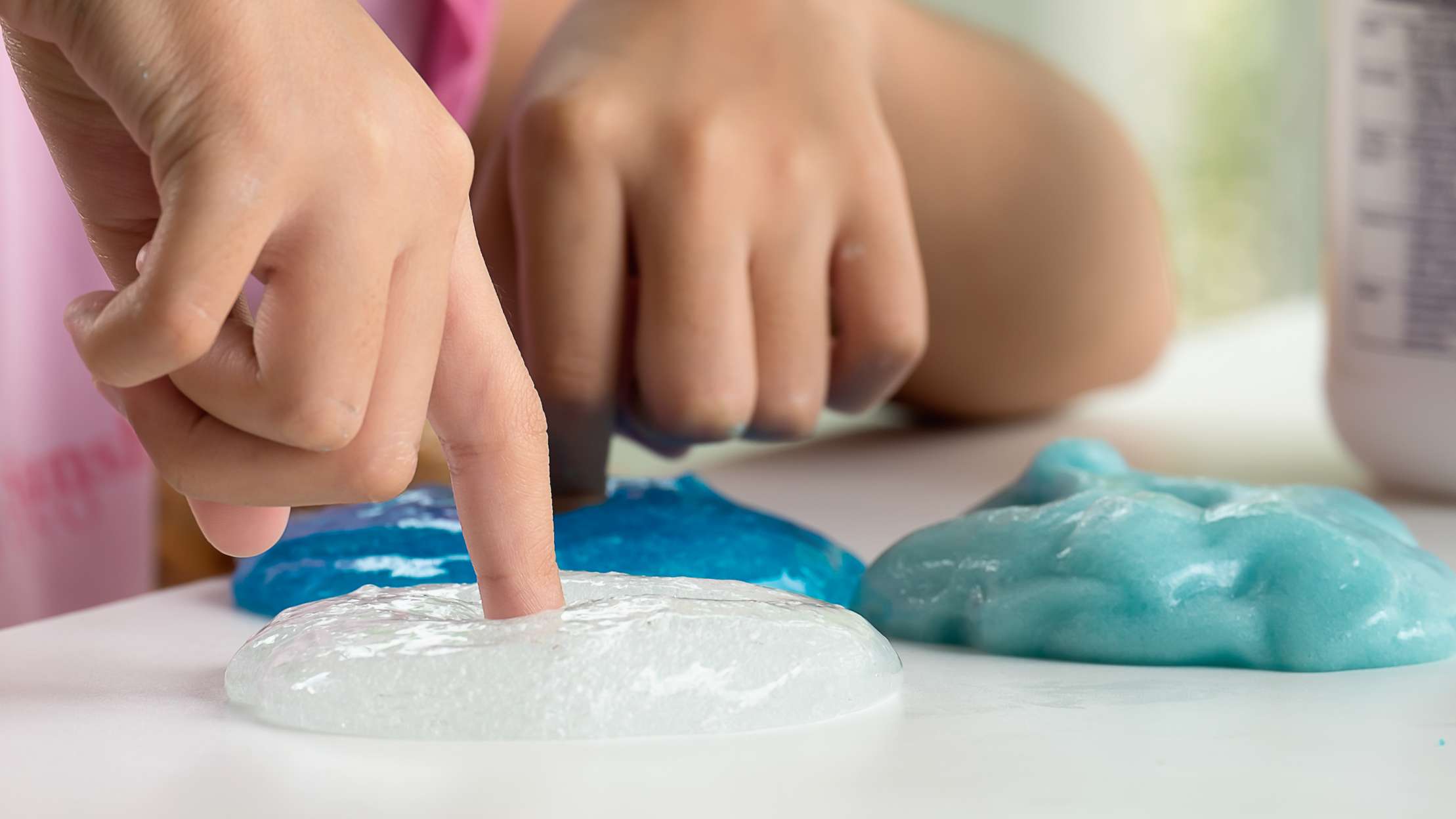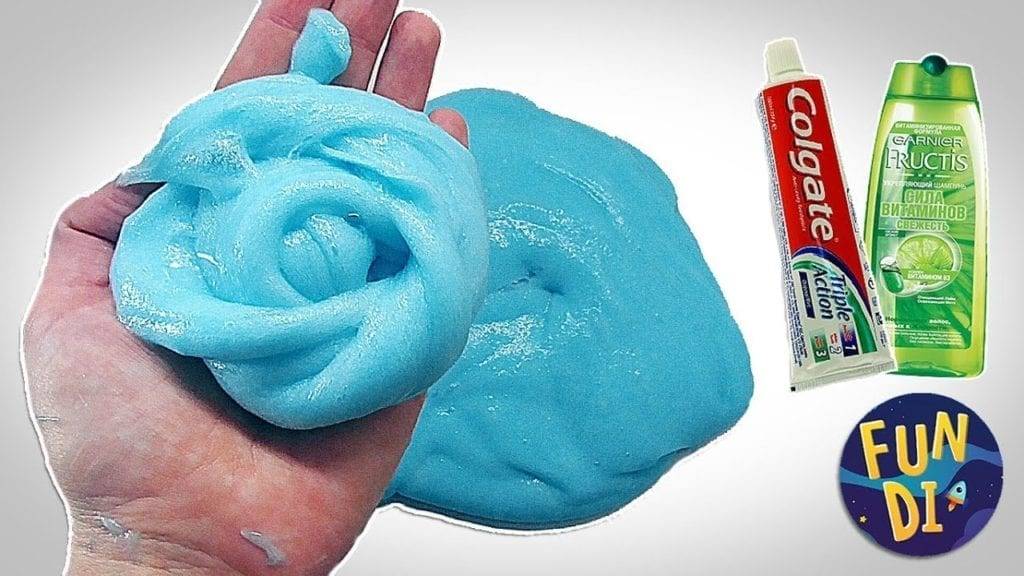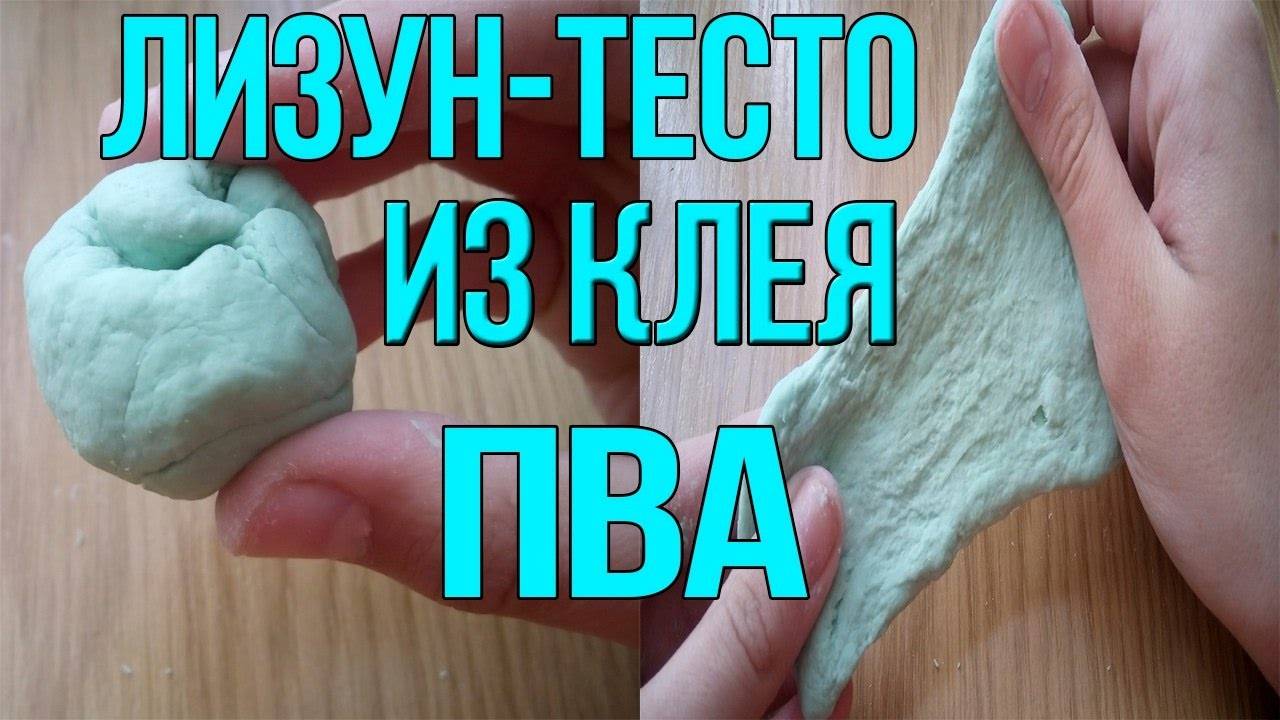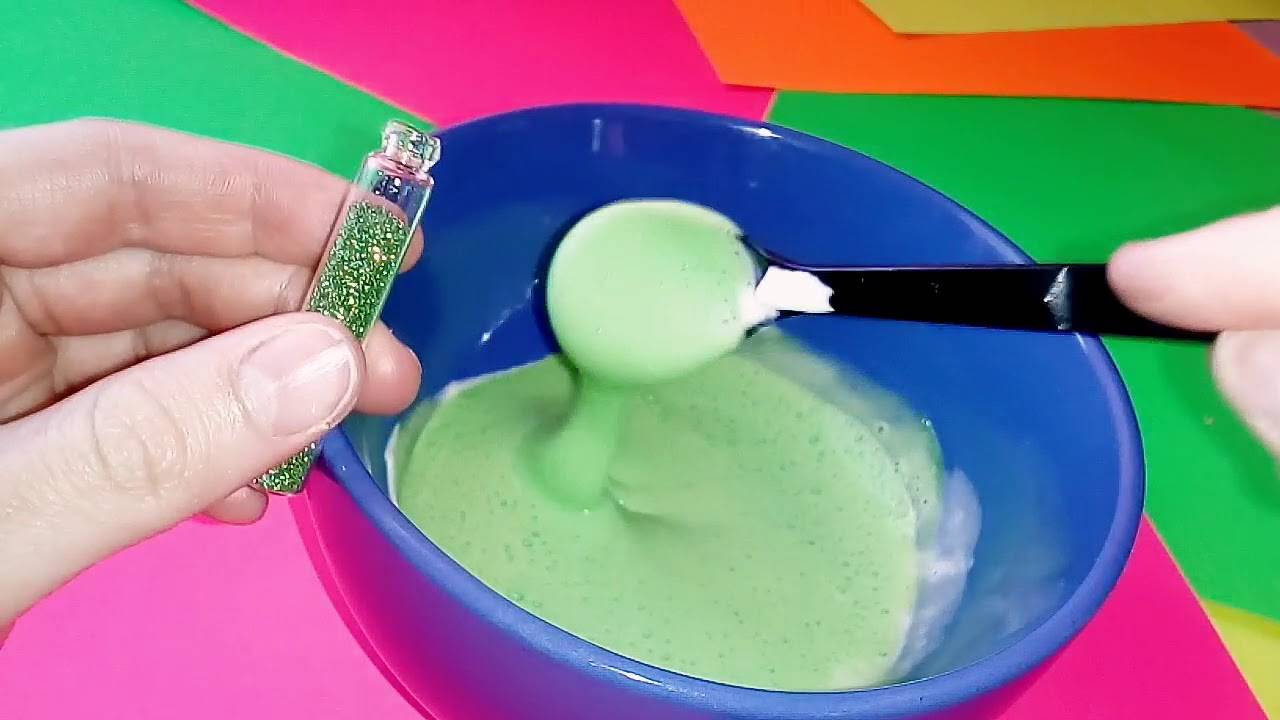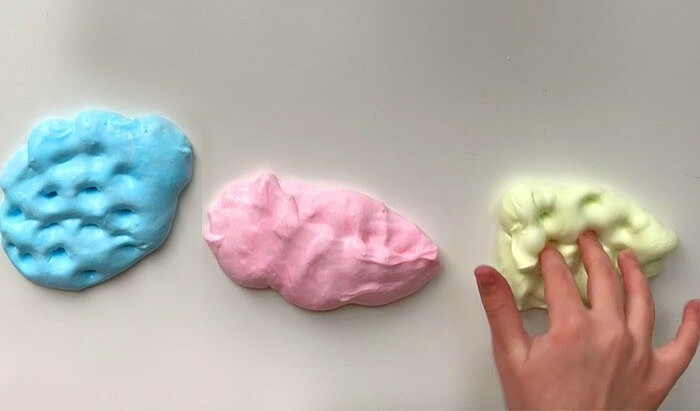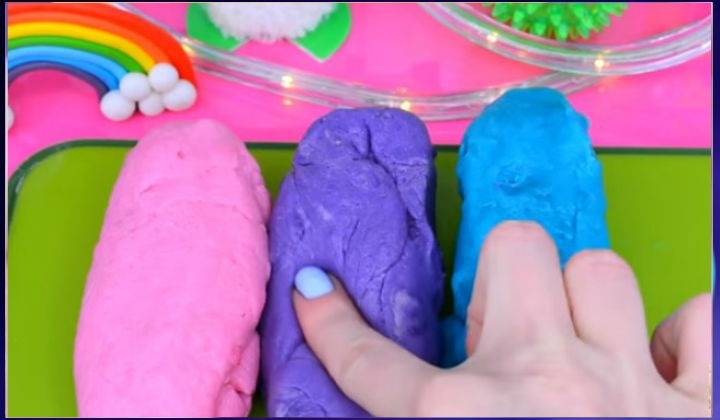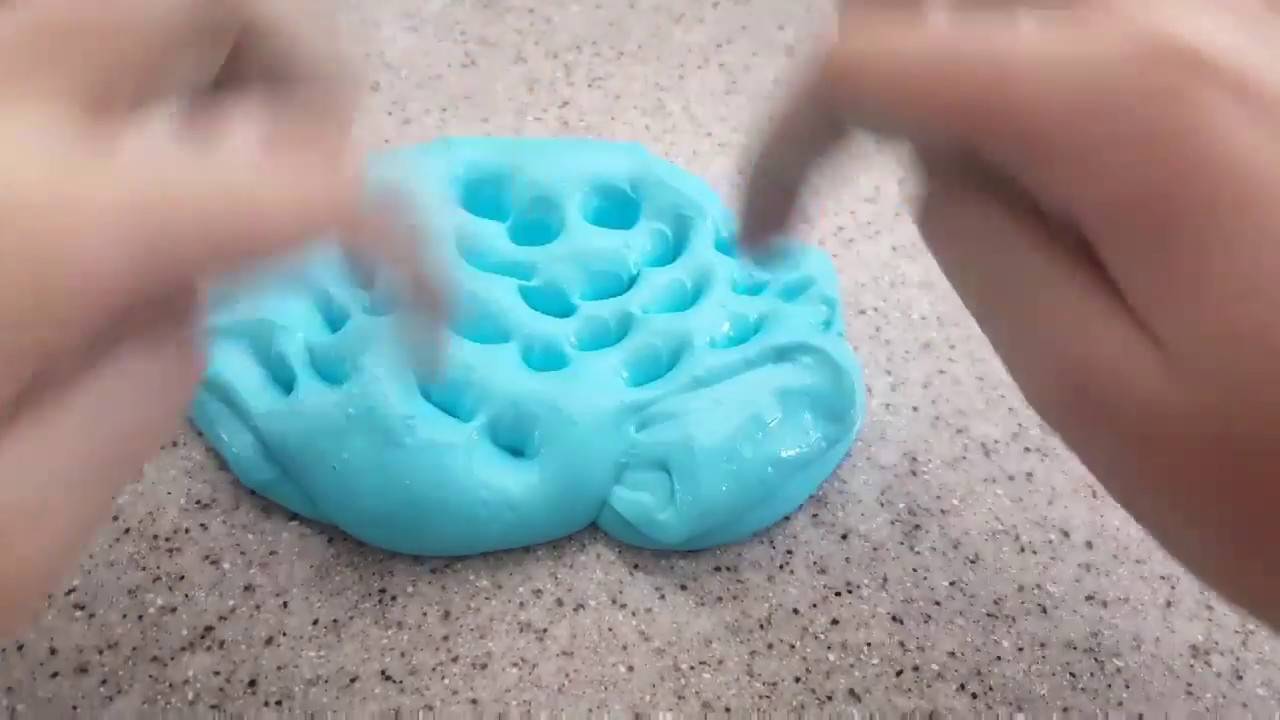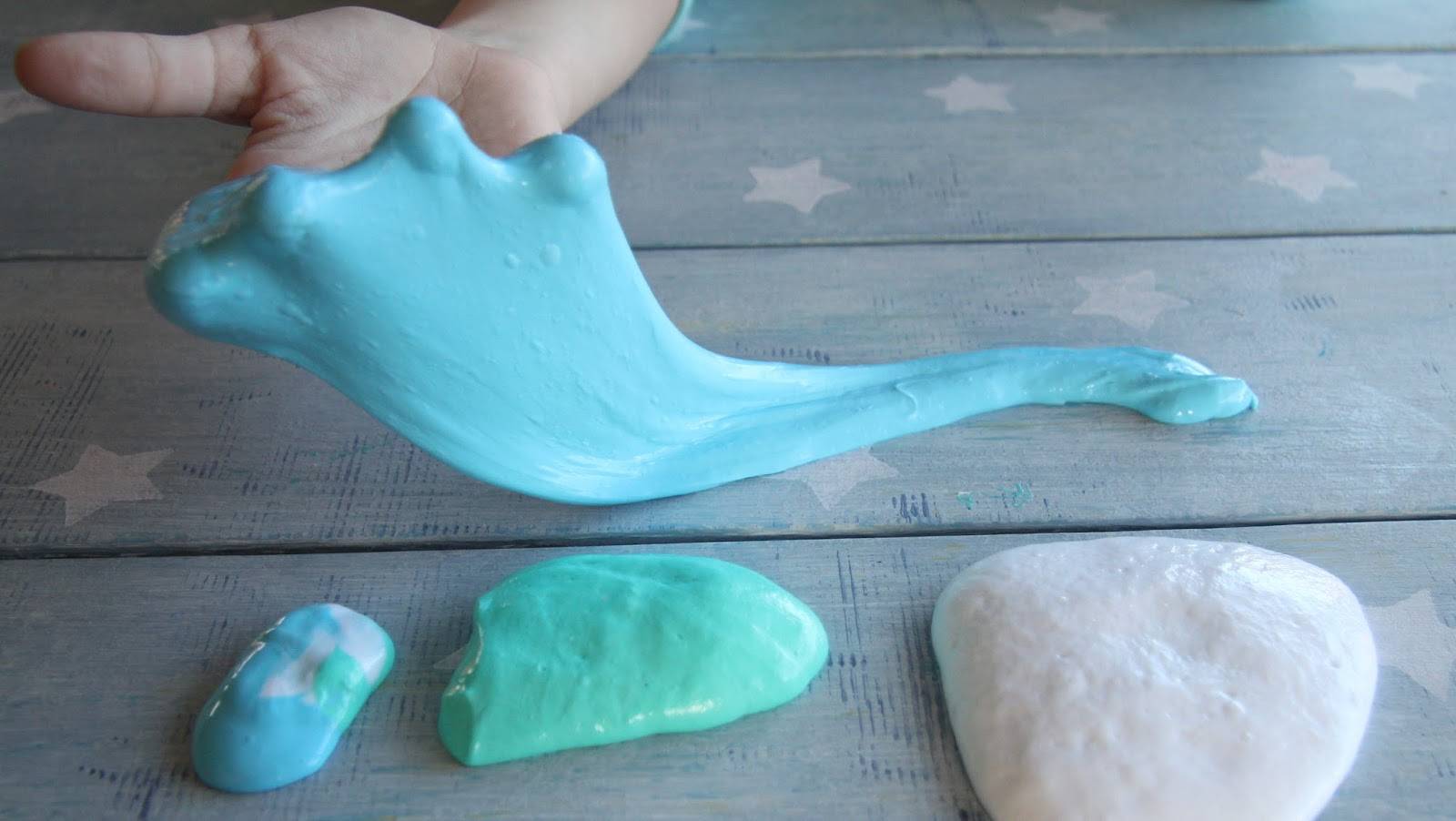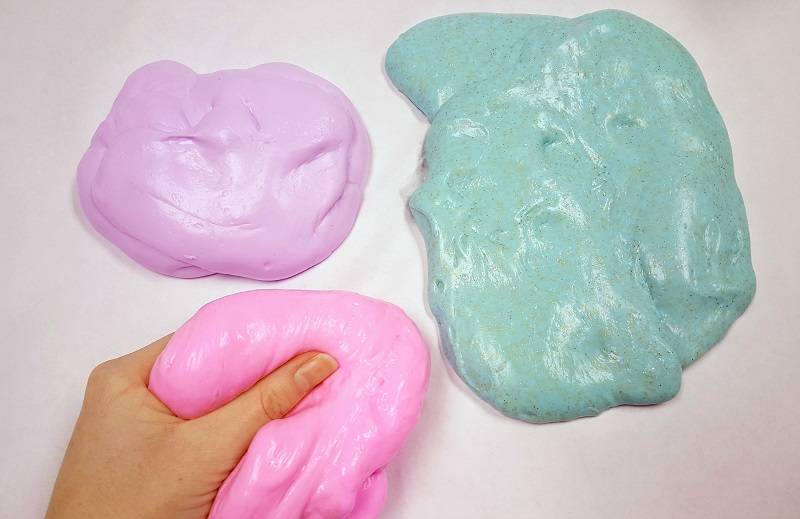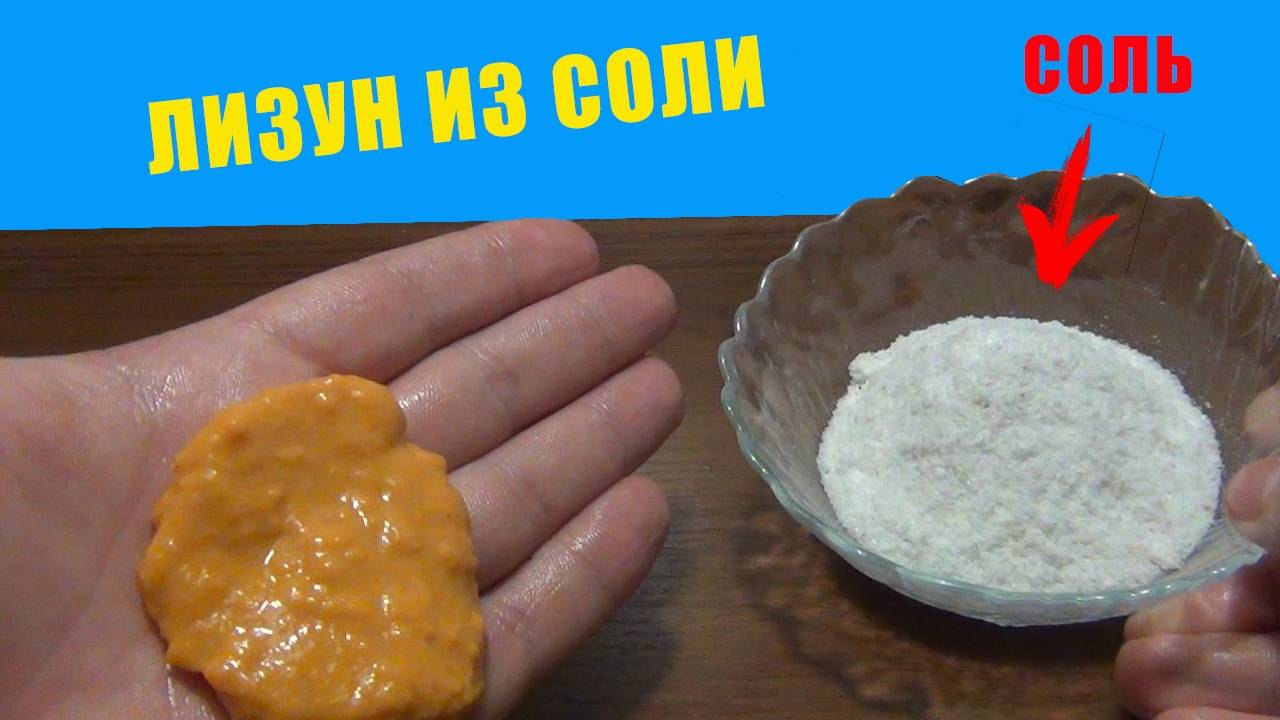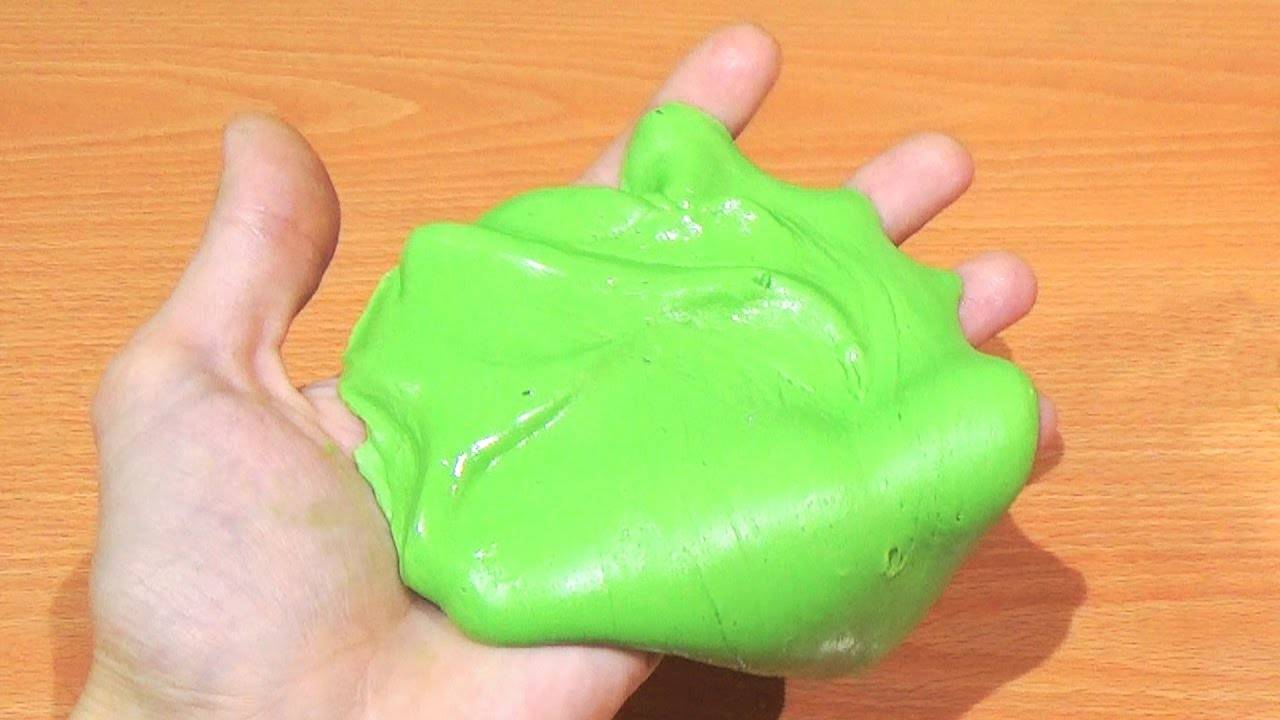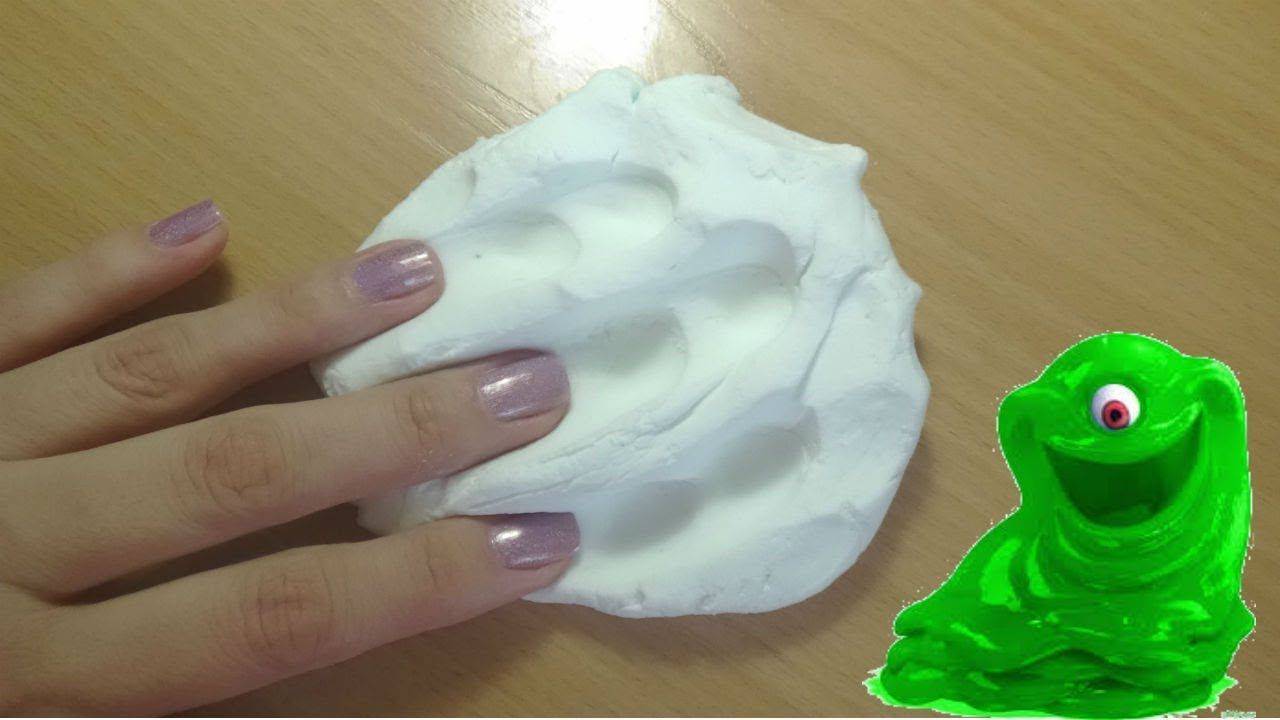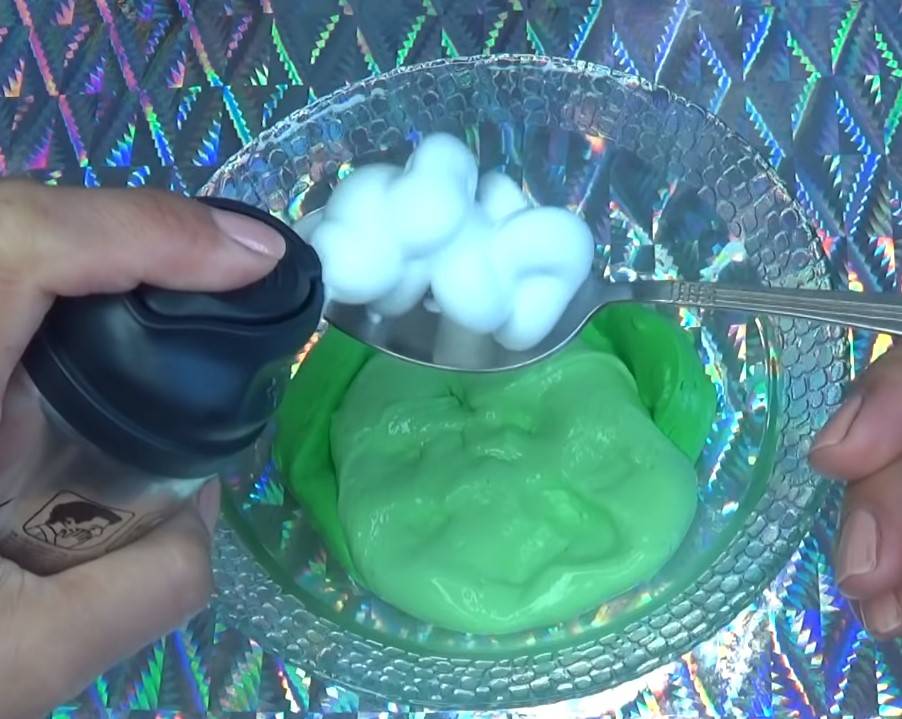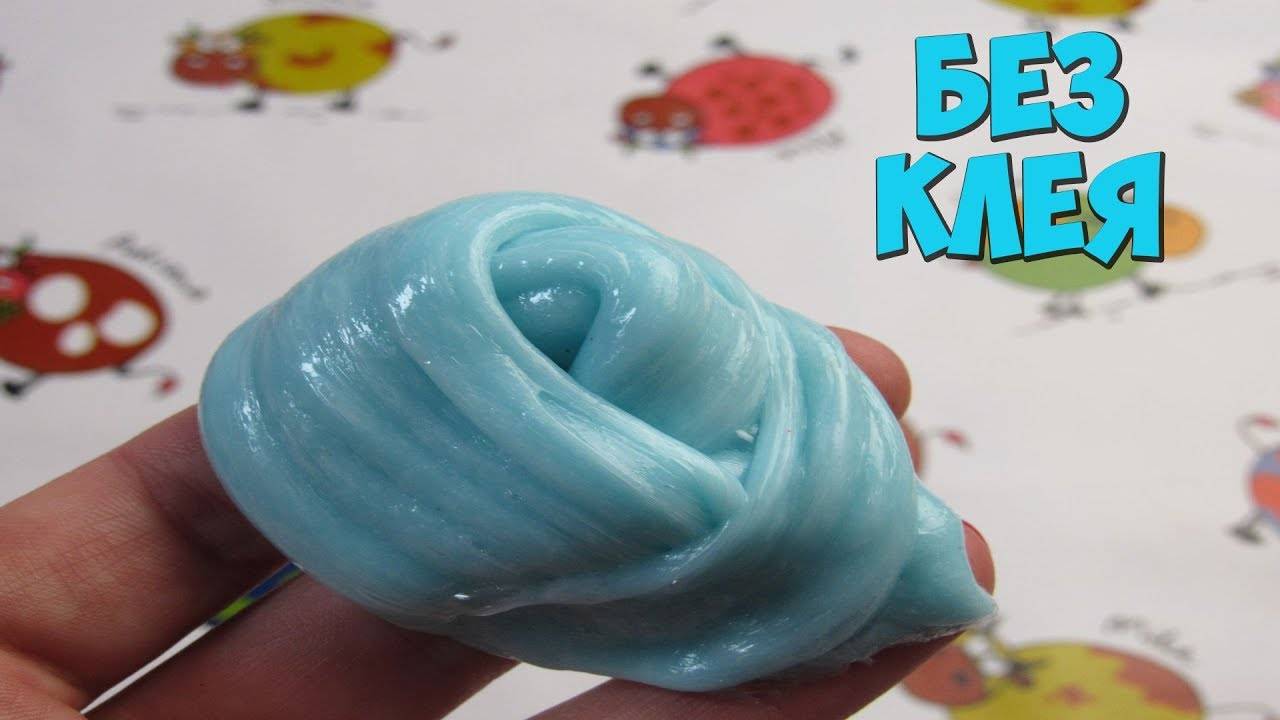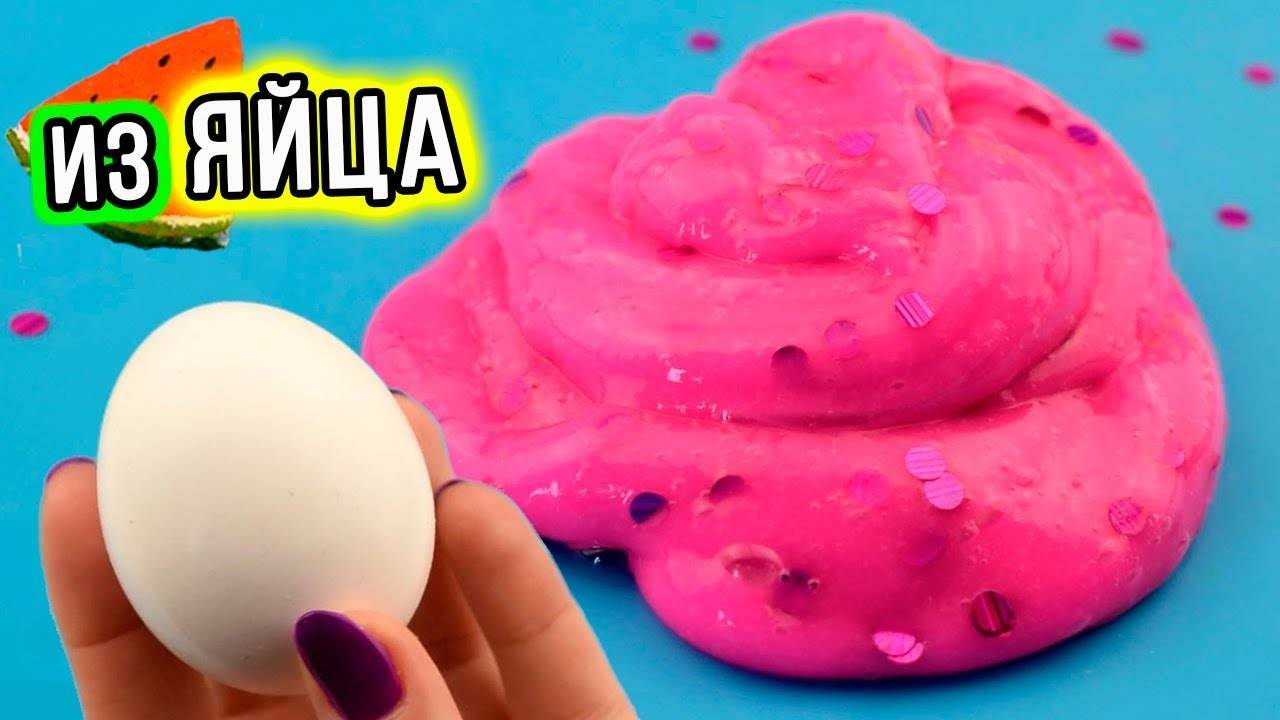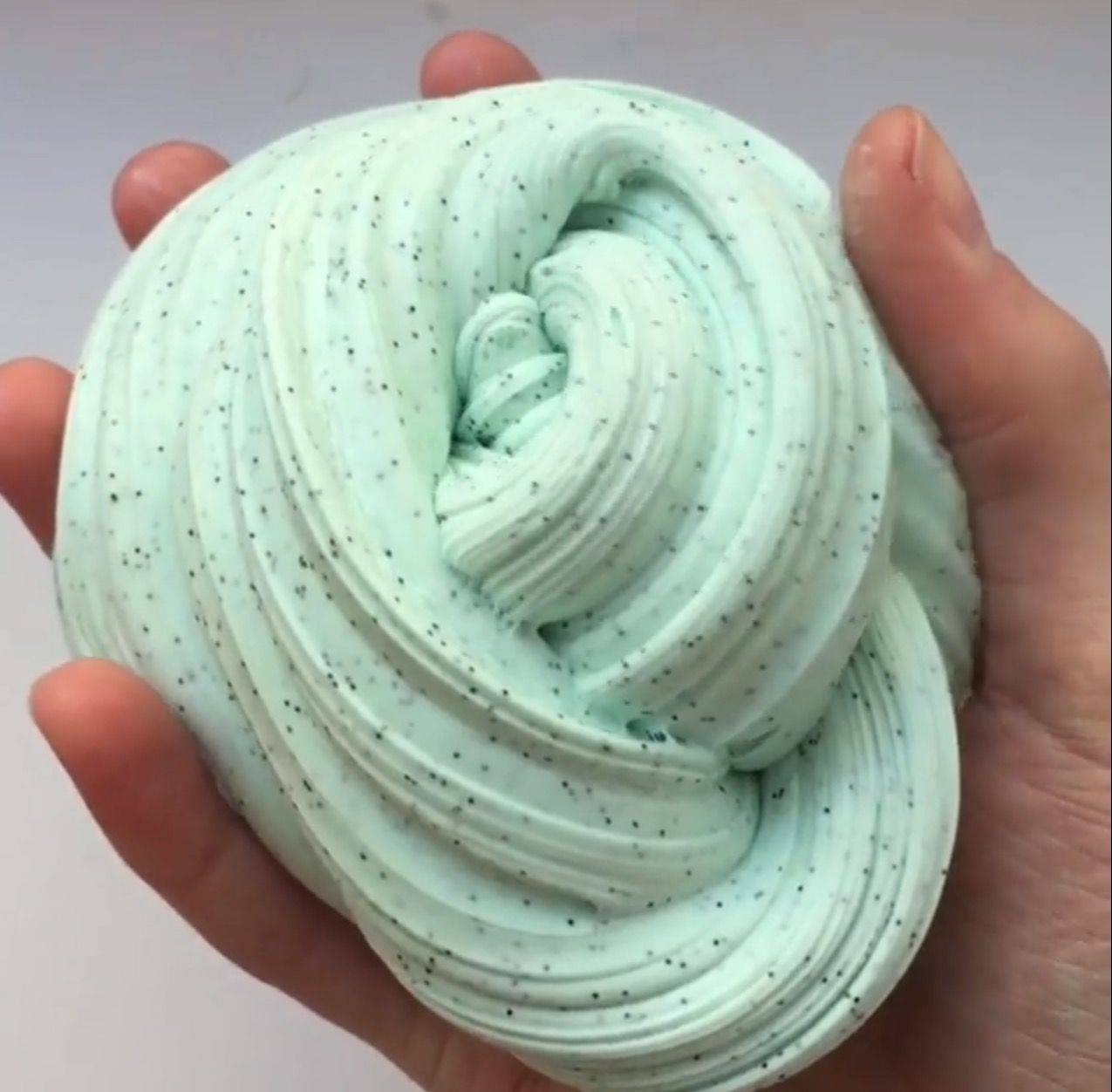How to make a magnetic slime
If you want something unusual, then we advise you to use this recipe. Slime will be attracted to the magnet if you bring it to it. You can also add phosphoric paint to the slime and the slime will begin to glow in the dark.
If interested, then follow this recipe:
Take a mug of water and mix it with sodium tetraborate ("boron").
Mix well so that there are no lumps or grains of sand left.
We take the second plate, PVA glue (30 g) and a glass of water. Mix everything again. Be sure to mix the amount that we indicated, otherwise nothing will work.
Then pour in the food coloring.
If you want to get a luminous slime, then you can mix in phosphoric paint.
Pour the mass from the first cup into the second, stirring occasionally
Pour in carefully.
Pour in, stir and watch the thickness of the slime. When the thickness suits you, then stop adding the second mixture.
Pour iron oxide into the middle of the mass.
Mix thoroughly until smooth.
Well, that's all - it's done. Move the magnet and the slime will be pulled towards it. Magic!
You can also make a slime according to the recipe from this video:
How to make a shampoo slime
A very good option is to use shampoo in the base. The recipe will require:
- Shampoo, no harmful additives.
- Glue "Titan".
- Dye.
- Capacity.
- Spatula or spoon.
Sequencing:
- Pour shampoo into a plate, preferably without harmful additives.
- Pour dyes into the center of the plate, you can add sparkles.
- Mix everything well so that there are no lumps, until smooth.
- Add Titan glue to this mass, in a ratio of 3: 2 (there should be more glue).
- Stir until uniform and smooth.
- If the mass is thin, then just add a little more glue.
The slime will turn out to be stretching like rubber, but then it will take the opposite shape. Store the slime in a container with an airtight lid. Otherwise it will dry out.
How to make a shampoo slime without glue
A shampoo-based slime can be created without the use of glue:
- We take a simple, no harmful components, shampoo - one hundred and fifty milliliters.
- We take shower gel, also without harmful additives - one hundred and fifty milliliters.
- We mix everything in a plate.
- Put the resulting mixture in the refrigerator for forty to sixty minutes.
Handgs will have to be kept in the refrigerator, because it loses its stretchy consistency when the temperature rises.
How to make slime from sodium tetraborate and glue
Sodium tetraborate slime strongly resembles the store version
Since tetraborate is still a chemical, this slime must be played with caution. But its advantage will be more interesting properties.
To do it, we need:
- Sodium tetraborate ("borax"), half a teaspoon.
- Plain stationery glue, small bottle, thirty grams.
- Water.
- Dye of any color, if desired.
Then follow the instructions:
We take any container, pour warm water into it and pour out sodium tetraborate and mix it all well.
When everything is dissolved, we take the second container. Pour half a glass of water, glue and dye into it. Mix so that the consistency and color are uniform.
Now we take both containers
Carefully pour the solution with tetraborate into the solution with glue, in a thin stream, while stirring.
In the end, a stretching mass is obtained. She can safely play
Only you can't take it in your mouth.
Video recipe:
Learn how to make slime without glue and tetraborate!
How to choose the right cream?
The market offers a wide range of hand creams. These cosmetics differ in composition and consistency. Creams may contain:
- vegetable and animal fats;
- glycerol;
- essential oils;
- silicones;
- petroleum jelly and other components.
Each of these ingredients can have a certain effect on the consistency of the future slime. However, despite the above, you should choose a cream, guided by the following rules:
- purchase a product with a thick consistency;
- do not buy creams with an expired shelf life (because of this, allergic reactions occur when in contact with slime);
- do not buy a product that contains ingredients that cause an allergic reaction.
For the manufacture of a slime, inexpensive creams that meet the above requirements are suitable.
Slicer recommendations

In some cases, flour can be used to revive old anti-stress. If the slime drips, they try to thicken it with powder. This method is suitable for restoring slimes that are not food-based.
Food products are very easy to use, but it is important to follow a few guidelines:
- It is best to take water for mixing at room temperature or slightly warmed up. This will speed up the formation of the paste and improve the consistency of the slime.
- Be sure to stir the flour with your hands at least in the final stages of mixing, and after that you need to let the mass rest for at least 5 minutes.
- If you want to color the slime from flour and water, then you need to take a strong saturated dye, otherwise you will get a faded uninteresting shade.
- The dye in liquid form must be added, reducing the amount of liquid of other constituents. That is, if you took 1 tsp. dye, take less soap on a teaspoon.
- Dyes in dry form can be added without changing the proportions.
It should also be remembered that food-based slimes are short-lived. Already in 2-4 days, the mass will dry out and lose its properties. It is not worth reanimating such toys, it is easier to make new ones. To increase the life of the slime, its proper storage will help - in an airtight container away from sunlight.
How to make flour slime - watch the video:
Making slime from flour is an extraordinary way to spend time and experiment at home. Such recipes will not be able to achieve full compliance with purchased textures with the help of such recipes. Only a few of the ways you can make flour slime are perfectly honed, which opens up new possibilities for real experimenters.
What is the peculiarity of the ingredient?
There are several varieties of hand creams. Such products differ in composition, which is selected for a specific skin type. Hand cream is used to moisturize, soften and protect the dermis. Taking these goals into account, the composition of such cosmetics is selected. The basis of hand creams is water, which binds the components of the slime and provides the latter with viscosity. And glycerin, vegetable fats and other ingredients increase the firmness of the slime.
The use of hand cream as one of the components of the slime is also justified because this component reduces the likelihood of allergic reactions and other side effects when in contact with a toy.
How to choose ingredients for slime?

The modeling dough is sold in the store. It looks like small bright blocks tightly packed in a transparent bag or container. Its service life is short. Upon contact with air, the mass gradually loses moisture, becomes tight and solid. However, do not rush to dispose of it. There are many recipes that help restore elasticity and softness to the dough.
You can make the modeling dough yourself. To do this, mix flour with food coloring and salt. Pour the components with cold water, mix, knead with your hands with the addition of vegetable oil. It is better to make such a blank separately so that the child does not get tired and does not lose interest in making slime.
Slime from store-bought modeling dough does not require additional decorations, since the main component always has a bright juicy color, which remains saturated even after adding other ingredients. Homemade food coloring is added to flour in the early stages of the creative process. In addition, you can use sequins, beads, foam balls.
When making slime from modeling dough, you can independently control the degree of its softness. So, the younger the child, the more light and airy the texture of the toy should be. Add moisturizer, shampoo, water in several steps until you achieve the desired effect.
The homemade sculpting dough recipe includes vegetable oil. Use the product with the lightest odor. The harsh characteristic aroma may not please the child and cause unpleasant sensations. Therefore, it is better to use a refined product, and at the last stage add a few drops of essential oil to the toy.
Thickeners for slimes
As part of any slime, there are substances that give it elasticity, viscosity and the ability to stretch. These agents are called thickeners or activators. Without their participation, not a single handgam would have worked. Using our list of thickeners, you can make your own recipes, experiment with the proportions and types of ingredients.
Drugs from the pharmacy. Boron thickeners are available over the counter. These are the most proven activators, problems with them can arise if you add too many of them. Then the slime will turn out to be very dense and will not stretch. Such agents include: boric acid and its salts - sodium tetraborate or Borax.
In addition to boric ingredients, they are suitable for creating antistress: drops from the common cold "Naphtizin", hydrogen peroxide, liquid for contact lenses and Teimurov's foot remedy. All pharmaceutical compositions are well compatible with the PVA glue base.
Cosmetical tools. You don't have to rush to the pharmacy to get good stress relief. You can first look into the bath. What can be used from cosmetics: hair spray, styling foam, shaving gel and foam, liquid detergent.
Nutritional supplements. Liquid starch is well suited for making slimes. It's easy to do it yourself. For this:
- Dissolve a glass of cornstarch in a quarter of a glass of cold water.
- We put another three glasses of water on the fire and bring to a boil.
- Pour the corn solution into hot water, mix well.
- We heat up for one minute.
- Cool it down. Liquid starch is ready.
In addition to corn starch, you can use: soda, powdered sugar, salt, gelatin, flour. All of these additives are harmless and suitable for making slimes for children.
How to make a slime from glue and starch
Another simple recipe using glue. What is included:
- PVA glue.
- Potato starch.
- Water.
- Dense package.
- Dye.
Then follow the instructions:
- Pour about fifty milliliters of water into the bag.
- Pour starch in a ratio of 1: 2 to water.
- Shake the bag to mix.
- Add dye.
- Next, you need to pour twenty-five milliliters of PVA glue.
- We tie the bag tightly and mix the contents for five to seven minutes.
- The composition should exfoliate. As a result, we get a dense clot and a small amount of liquid.
- We drain this liquid, and our slime remains in the bag.
This slime can be played for a week if stored in a tightly closed bag.
We advise you to watch the video:
How to make a toy with your own hands?
Making a quality butter slime yourself is not difficult. All the ingredients it contains are cheap and available. Follow the step-by-step instructions from our recipes, and the result will certainly delight you.
Light plasticine recipe
You will need:
- 2 packs of light plasticine;
- 3 tablespoons of shaving foam.
- Remove the plasticine from both packages and combine in one piece.
- Mash the clay well with your hands.
- Add a little shaving foam from the bottle to the plasticine flattened on the palm of your hand.
- Knead and mix the plasticine with the foam thoroughly with your hands until the foam is absorbed and the plasticine stops tearing. In the process of mixing, it will initially stick to your hands, but then it will stop.
- If the mixture is not soft enough, add some more shaving foam and stir again.
Take pieces of plasticine of different colors. Then, when mixing, you get a new interesting shade.
From shower gel and airy plasticine
 Even a child can handle this simple recipe.
Even a child can handle this simple recipe.
Ingredients:
- 1 serving of air plasticine.
- 15–20 ml shower gel.
- Knead the clay in your hands until it softens.
- Add shower gel to it in small portions and knead until the mass stops breaking.
- Check the readiness by spreading the mixture on the table. If it doesn't stretch well, add a drop of gel.
To understand how high-quality butter slime you have turned out, a simple test will help: put it on a hard surface, stick your fingers into the mass and start pulling it. If the slime stretches and leaves fingerprints on it, but it does not tear and gathers well, then you did a great job.
No glue or sodium tetraborate
Ingredients:
- 1 tablespoon dishwashing gel
- 1 teaspoon hand cream
- 4 tablespoons of starch;
- 1 teaspoon of toothpaste
- 1 teaspoon of cosmetic oil.
- Pour dishwashing gel into a container.
- Add half a serving of hand cream, half a serving of toothpaste and oil to it.
- Mix the ingredients thoroughly with a spatula, spoon or spatula.
- Pour starch into the resulting liquid in small portions, stirring constantly.
- Knead the mixture with a spatula until smooth.
- Lubricate your hands with the remaining oil and knead the slime with your hands.
- Add remaining hand cream and toothpaste until desired texture.
Always add friable ingredients such as flour and starch gradually and in small portions so as not to spoil the consistency.
From PVA glue

- 200 ml of PVA glue.
- 4 teaspoons of sodium tetraborate.
- 1 teaspoon hand cream.
- 3-4 tablespoons of shaving foam.
- 1 pack of air plasticine.
- Pour the glue into a container.
- Add hand cream and shaving foam to it alternately and stir.
- Pour the activator into the resulting mass and mix thoroughly until it becomes elastic.
- Cut the clay into small pieces.
- Put the mass on a hard surface, distribute pieces of plasticine over it and knead with your hands like dough.
From shampoo and starch
- 2 tablespoons of shampoo.
- 2-3 tablespoons of starch.
- 1 teaspoon hand cream.
- 2 tablespoons of shaving foam.
- 80–90 ml of PVA glue.
- 2 teaspoons of any thickener (sodium tetraborate, lens solution, eye drops).
- Pour shampoo into a container.
- Add shaving foam to it and stir.
- Gradually add starch to the liquid and knead the mixture until it becomes whipped cream.
- Add hand cream and stir.
- Add PVA glue and mix well again.
- Pour in the thickener, stirring constantly.
- Knead the resulting mass with your hands.
Clay free
- 65–80 ml of stationery glue.
- 1 teaspoon of body lotion.
- 2 tablespoons of shaving foam.
- 2 teaspoons of baking soda.
- Pour the glue into a container.
- Add shaving foam and body lotion alternately and stir.
- Add baking soda gradually, stirring constantly.
- Knead the thickened slime with your hands.
Butter slime can be decorated with decorative items, but only use small decorations. Large ones will ruin its texture.
How to make a slime from pencil glue
Sometimes there is no ordinary PVA glue in the house, but there is a glue stick. In this case, do not be upset, because you can also get an excellent slime from it.
Course of action:
- We take out the glue itself from the pencil.
- We put in the microwave. We keep until the moment, until it becomes soft.
- Pour the dye into this mass and mix.
- In another plate, you need to mix sodium tetraborate with water.
- We combine everything, gradually mixing.
- If the slime is too liquid, then you need to add more sodium tetraborate.
How to make a Galaxy slime from pencil glue, see this video:
Ingredients for making slime

Flour is a food product obtained by grinding various grain crops. In cooking, this product is well known as a base for baking. And those who have kneaded the dough at least once will guess how to make the simplest slime from flour and water.
Since the white airy powder is made from milled grains, it contains vegetable protein. It is this protein, when combined with water, forms a thick mass - gluten. The ability to absorb moisture in cooking has been called the water-holding capacity of flour. It is she who affects how much water needs to be added to the dough. But this property also makes the product suitable for sliding.
To make slime from flour, liquid ingredients are added to the powder composition, and then kneaded well. The food product "takes" excess moisture, giving out thick gluten. At the same time, it should be noted that the moisture content of flour depends on a number of factors: the type of plant and the conditions for its cultivation, the method of processing grain, the degree of grinding, and others.
According to the degree of moisture content, two types of flour are distinguished:
- Strong - the powder is able to absorb more water, but the gluten remains elastic. Accordingly, such a slime made of flour and water will more resemble hendgs, since the volume of gluten does not stretch well.
- Weak - in this case, very little water is required, and the gluten is more elastic, the cooked slime can be stretched a little.
The difficulty lies in the fact that before you start making slime out of flour and water, you will not be able to find out what type of food product belongs to.
Note! The moisture content of a food product may differ even if it is obtained from the same plant species, such as wheat. This is due to the different growing conditions of the plant and the processing technology of the food product.
The difference is felt even in recipes that do not require strict proportionality.
There is a wide variety of slimes. It will not work to completely replicate industrial textures using food, but experimenters are actively trying to do it. The easiest way to make slime from flour and water is to mix these two ingredients. The resulting mass will slightly resemble handgams - it crumples pleasantly and crumbles through your fingers.
Also, the slimers have developed a number of flour slime recipes that bring the consistency of home antistress as close as possible to the purchased one. The following can be used as auxiliary components:
- Adhesives and thickeners. They are the basis for the original textures. Such slimes stretch well, wrinkle. Flour in this case acts as an additional thickener and adds crunch to the toy.
- Shampoo. It is used to make the composition slightly airier and more elastic. Shampoo will not help to completely recreate the texture of the "gum", but the dough mixture can still be stretched a little.
- Toothpaste. The agent in flour and water slime recipes is added for airiness and porosity in the texture. Toothpaste formulations are unusual to the touch and smell refreshing.
- Liquid soap. Forms a stretchy substance that also smells very pleasant.
Among the recommendations on how to make a slime from flour, there are even suggestions to add a food product to gouache or use baby oil. You should not blindly trust such advice, because you can simply spoil the ingredients, but do not stop yourself from experimenting.Do not forget that flour turns into a paste on contact with water, which means that one of the additional ingredients should contain at least a little liquid.
Note! If in classic glue recipes a thickener is added a little, and the base is a mass liquid in consistency, then in most combinations with flour the powder is both the base ingredient and the thickener, which must be transformed into a semi-liquid slime substance.
3 How to combine wooden materials - a simple solution
For gluing wood, wood glue is traditionally used, which is considered the best for this purpose. It has some features that do not allow it to be stored ready for a long time. In a liquid state, after a short time it turns into gelatin, it is covered with mold. A gelatinous mass can be stored for a longer time, from which pieces are cut for the subsequent preparation of casein glue. There are several cooking methods.
According to the first method, we grind the most ordinary carpentry glue and soak in water until it swells completely. The finished mixture is soft, like a jelly. We melt this mass in a water bath in a container called oilcloth. If it is not there, we use any utensil, even a tin can. The fire should be very weak, we make sure that the mass does not burn. Burnt glue turns yellow, it is weaker than properly prepared.

Swollen wood glue is melted in a water bath
Mix the gelatinous mass constantly with a wooden stick until it becomes liquid. Add vodka to this liquid at the rate of one liter per 760 grams. Powdered alum is required - 12 grams per 100 grams of glue. This recipe makes the most durable water repellent wood glue.
Making wood glue using the second method is easier. In the oilcloth, bring the wood glue to a boil in the same ratio with water. When the mixture begins to cool and becomes thicker, pour it into a porcelain mortar, grind it with a pestle until the mass becomes gelatinous. We spread the mass on a plate, wait until it cools, and cut it into smaller pieces. If necessary, dissolve the piece in water 1: 1 and vodka, which we take half the mass of the workpiece. Boil the mixture and cool.
Another easy way. We take equal parts of wood glue, 9% vinegar and vodka. First, boil the vinegar and glue in a water bath until the mixture is completely dissolved. Stir constantly, add vodka. According to another recipe, we heat the same parts of glue and water in a water bath until the mixture becomes thick. Add glycerin equal in weight to the glue, continue heating until the water evaporates completely. We dry the finished mass, if necessary, we dilute it with water in equal proportions.

